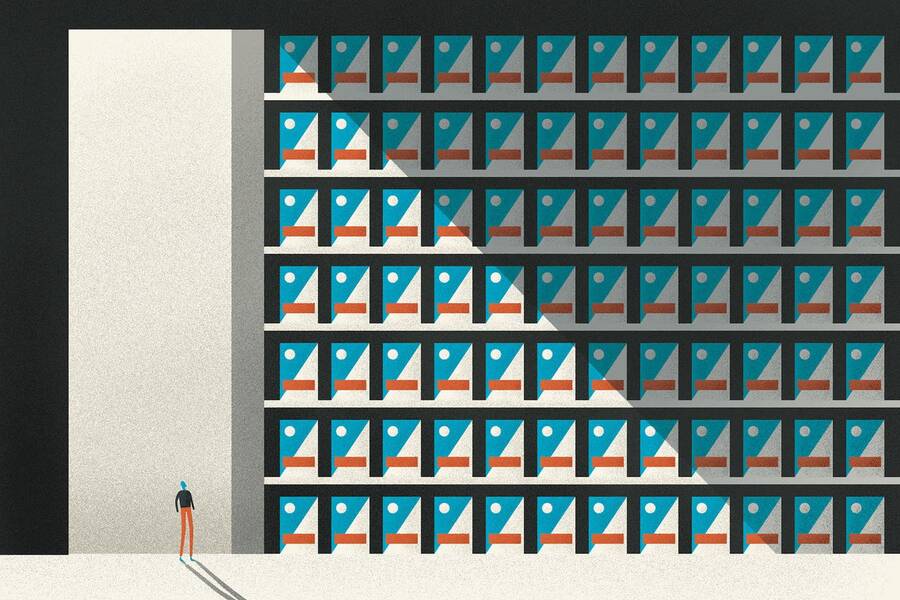Operations Dec 2, 2019
A Simple Way to Make Your Customers More Satisfied with Their Deliveries
Hint: It comes down to when you send status updates.

Michael Meier
Imagine you’re working on a project for a client. You want them to notice your effort, so you send frequent updates as you complete each task.
This is called “operational transparency”—the idea being that “if you can see how hard I’m working, then you’re going to appreciate it more,” says Rob Bray, an associate professor of operations at Kellogg. Plus, customers may appreciate feeling in the loop.
But transparency can come with a downside. After all, if you show customers every step, they might also notice long lulls between progress reports. “You’re going to air dirty laundry too,” Bray points out.
So how can you maximize the upside of this transparency while minimizing the dirty laundry?
A recent study by Bray showed that the timing of updates matters. He analyzed a huge data set of package-delivery records from the giant e-commerce firm Alibaba in China. When customers got frequent status updates on their online orders toward the end of the delivery, they tended to give the service a high score. But if activity was clustered near the beginning and followed by inactivity, scores tended to be lower—even if total delivery time was the same.
He suspects this pattern emerged because customers pay more attention to what happens late in the process—a phenomenon known in psychology as the peak–end rule.
“Usually, people remember the end of the experience,” Bray says.
The lesson for companies, he says, is that customers may be happier with services when more updates are offered toward the end. Or perhaps firms should invest more resources in improving the last phase of product or service delivery, since clients pay closer attention to those steps.
“Companies should be aware of this peak–end effect,” he says.
A Data Goldmine on Operational Transparency
Bray’s study arose from a fortuitous opportunity. The Alibaba Group’s logistics business, Cainiao, agreed to let researchers in the Manufacturing and Service Operations Management Society (MSOM) analyze over 100 gigabytes of data on packages delivered in China in 2017.
“It’s an insane amount of data,” Bray says.
MSOM members had about 10 months to study the data set, with the best resulting paper winning a prize. Bray’s research came in first place.
Going into the contest, Bray didn’t have a clear question in mind. So he just started poking around the data. Each delivery record showed when the product was ordered, was dispatched from a warehouse, was received by a carrier, entered or exited a facility, was scanned for final delivery, and was received by the customer. On average, a record included about seven delivery-logistics actions (not including the customer ordering and receiving the package). Customers could track real-time updates on mobile apps.
Bray could investigate whether the timing of updates affected customers’ perceptions of service quality.
But what intrigued Bray was the score that customers assigned to each delivery. Normally, in logistics data sets, “it’s simply, ‘This inventory moved from here to here to here to here,’ full stop, and that’s all you know,” he says. “Was that good or was that not good? I don’t know.” But having the ratings was “remarkable,” he says. “That is the thing that makes this data set so unique.”
Bray realized that the data offered a detailed real-life example of operational transparency, and he wondered if this transparency benefited the company. The company’s assumption was that customers would appreciate getting updates about the work being done on their behalf. But, of course, the flip side is that customers would also notice long periods of inactivity.
In other words, customers could see activity, but also periods when nothing was happening. And since every step was time-stamped, Bray could investigate whether the timing of updates affected customers’ perceptions of service quality.
Staggered Scores
Bray started by analyzing all entries for a particular type of action—dispatching from a warehouse, for example, or entering a facility—for 4.68 million packages. Then he studied scores for the overall delivery that included that action. Deliveries were rated from 1 to 5, with 5 being the best.
To his surprise, a neat pattern emerged. Deliveries with a score of 1 or 2 tended to have actions that occurred slightly earlier than those with a score of 3. Those that scored 3 tended to have actions that occurred earlier than those with a score of 4. And the deliveries that got the best scores tended to be those for which that particular step in the process happened latest—that is, closest to delivery.
“I was flabbergasted,” he says. “What was dramatic was the perfect ordering.”
To investigate further, he analyzed the relationship between the timing of an action and the score. For instance, he could estimate the average score if an order entered the facility, say, 20 percent of the way through the delivery process versus 80 percent of the way through.
Bray found that moving any one action from the 15–20 percent window to the 80–85 percent window was linked to an increase of 0.01 in the score. And if the average timing of all actions was 80 percent of the way through the process rather than at the 20 percent mark, the average score was 0.05 points higher—on par with the score boost from expediting delivery by about one day.
However, these links didn’t prove that later action times actually caused higher scores. To gather more evidence, Bray took advantage of the fact that activity typically slowed down over the weekend. Packages ordered on Fridays tended to have lulls at the beginning of the process; conversely, those that arrived on Mondays tended to have lulls toward the end.
As expected, packages that underwent an early weekend lull got higher average scores.
Happy Customers
Why does this happen?
Bray can’t say for sure, but he thinks that the peak–end rule is at play. Essentially, this means people remember the end of an experience more than the beginning.
In an earlier study, researchers illustrated this phenomenon with a simple lab experiment. Each of 32 male participants performed an unpleasant action twice: putting his hand in a tub of water chilled to 57 degrees Fahrenheit for one minute. During one of the two trials, the participant was told to leave his hand in the tub for 30 additional seconds while the water became a couple of degrees warmer but was still uncomfortably cold.
Then each man had to pick whether he would rather repeat the one-minute or 90-second trial. About two-thirds preferred the latter, even though the total amount of discomfort experienced would be greater.
The result is counterintuitive because adding an extra unpleasant step should make the overall procedure worse. But the participants seemed to give more weight to the last 30 seconds of their experience.
When people wait impatiently for a package, a similar effect could be occurring. Imagine a customer who gets many early updates and then a long lull, Bray writes: “After seeing the package zip through three facilities in two days, you anticipate its arrival at any moment, only to suffer four additional days of delay. Moreover, the ambitious start makes you more conscious of the subsequent silence.”
Then consider another customer who gets increased updates toward the end. While seeing little progress at first is “unsettling,” Bray writes, the person might just assume that the company doesn’t report every step. Later, he speculates, “you’re reassured by a steady stream of updates. This final hustle is fresh in your mind when you give the delivery the best possible score.”
Extra Credit
How should workers and companies interpret these findings?
It’s probably not feasible for a delivery company to move more logistical steps toward the end. But perhaps it’s not necessary to report every single action near the beginning, Bray says. Or maybe the firm should put a lot of effort into making the final steps occur quickly.
Similarly, if, say, a consultant is writing a report for a client, it might be better to provide more updates when the project is close to completion than to send a flurry of early updates followed by silence.
When you’re getting judged on your performance, Bray says, “you happen to get more credit for work you do right before your review period.”





